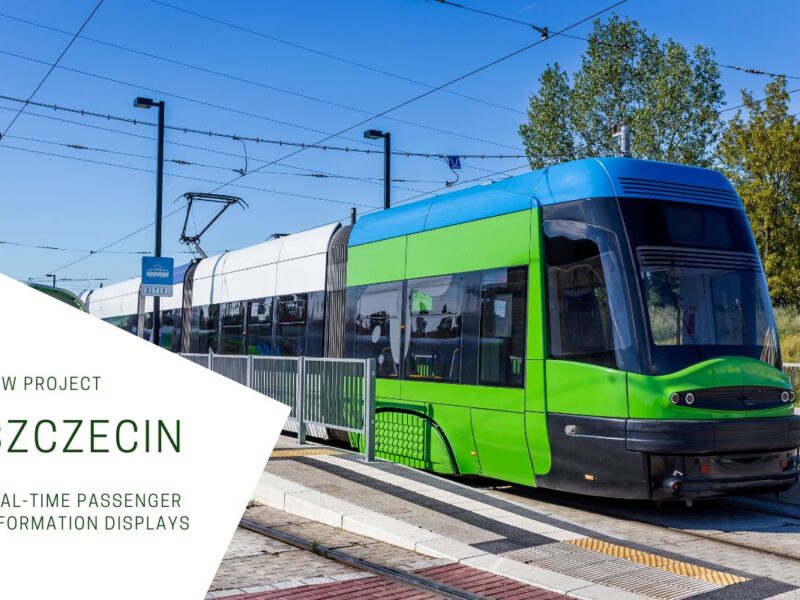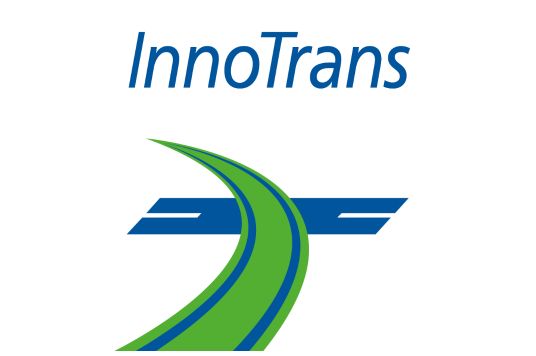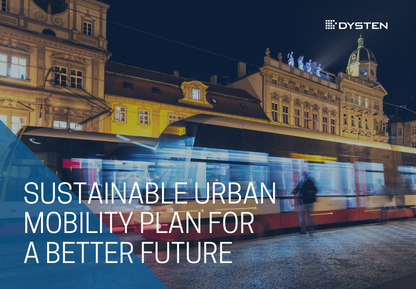
Sustainable Urban Mobility Plan for a better future
The concept of the Sustainable Urban Mobility Plan (SUMP) is becoming increasingly important in shaping the future of cities. The main reason for this trend is the need to counteract the effects of growing urbanization and increasing population. In cities where transportation is a source of negative impacts on the natural environment and the health of residents, SUMP allows for planning more sustainable and environmentally friendly transport solutions.
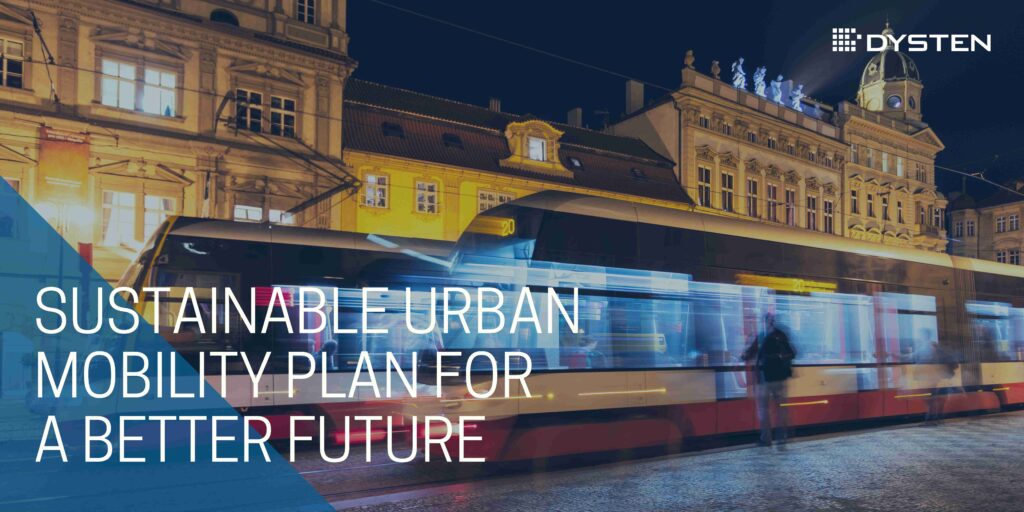
SUMP is a strategic plan aimed at promoting cleaner, more efficient, and more sustainable transportation options for city residents. The European Union has developed guidelines for SUMP, which provide cities with frameworks for designing and implementing these principles. Detailed information can be found on The Urban Mobility Observatory website. The guidelines cover all aspects of sustainable urban mobility, from public transport to cycling and pedestrian infrastructure, and include recommendations for engaging stakeholders and society.
Basic SUMP guidelines
The SUMP recommendations encompass a range of actions aimed at improving the quality, accessibility, and efficiency of transportation while reducing its negative impact on the environment and people’s health. Here are some of them:
- Development of public transportation – increasing the accessibility, frequency, and efficiency of public transportation, including buses, trams, metro, and other means of transportation.
- Electrification of urban transportation.
- Promoting the idea of shared mobility – car sharing, bike sharing, electric scooters. This will reduce the dependence on personal cars and limit the negative impact of transportation on the environment.
- Integrated urban space management – better alignment with transportation needs, provision of adequate infrastructure, and the introduction of design principles that promote sustainable transportation.
- Development of Intelligent Transportation Systems – the introduction of modern transport management systems that allow for traffic optimization, reduced travel time, and improved safety.
- Ensuring transport accessibility for all users, including people with disabilities, seniors, children, and other groups in need of special care.
Polish cities strive for Sustainable Urban Mobility
Poland, like many other countries in Europe, faces significant challenges related to urban mobility. Traffic congestion, air pollution, and inadequate public transport infrastructure are significant problems. To address these challenges, more and more cities are opting to take action towards the development of Sustainable Urban Mobility.
The cities of Gdansk, Gdynia, and Sopot have improved their urban transport system by implementing the Integrated Traffic Management System TRISTAR, which has led to more efficient management of public transport and increased road capacity. The system improves the efficiency of urban transport, while reducing emissions and traffic congestion. TRISTAR allows for better monitoring and coordination of the work of various means of transport, allowing for better adjustment of the offer to the needs of passengers. This makes public transport more competitive, contributing to a reduction in car traffic in the city.
Gdańsk has transformed into an intermodal city with transfer centers established in multiple locations, allowing for convenient and rapid transfers between various modes of public transportation, such as the Gdansk-Lostowice transfer center equipped with Real-time Passenger Information Displays provided by DYSTEN. Thanks to the diverse range of public transport options, residents of Gdansk can choose optimal connections and modes of transport, which contributes to improving the efficiency and convenience of getting around the city.
Gdansk is systematically expanding its network of bike paths, building bike parking lots and introducing bike-sharing stations. The city is investing in the development of the tram and bus network, introducing new lines and modernizing existing ones, as well as introducing electric buses. These actions aim to reduce air pollution, improve the quality of life for residents, and reduce traffic congestion and jams on the roads.
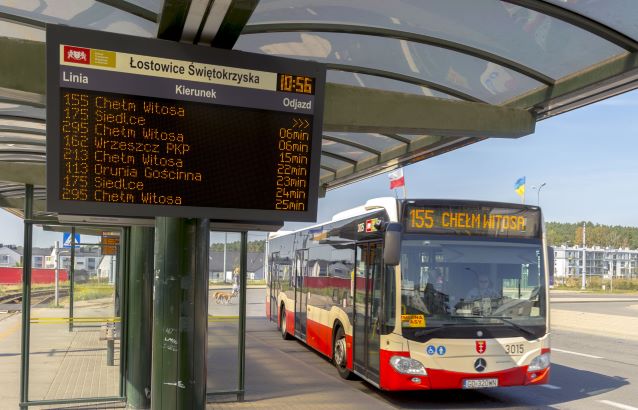
The GZM Metropolis is continuously expanding and modernizing its public transport network. It is implementing solutions to reduce the use of individual car transport and increase the energy efficiency of daily journeys. An incentive to use urban transport is the continuous improvement of its comfort. Metropolis regularly equips stations with the Passenger Information System, and passengers can conveniently plan their trips using the mobile application implemented by DYSTEN.
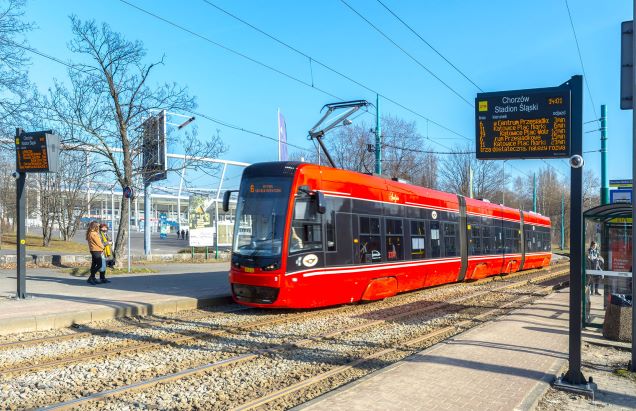
Increasing the number of passengers using public transport helps reduce traffic congestion and air pollution and noise in the city. In addition, the GZM Metropolis has also introduced many other activities, such as investments in the network of bike roads, the construction of new bicycle parking spaces, as well as the development of car-sharing and bike-sharing systems that encourage the use of alternative means of transport.
Metropolis promotes eco-friendly that have a positive impact on the environment, in particular green transport. As part of the activities undertaken by the GZM Metropolis, discussions are being held on the use of hydrogen as the fuel of the future in public transport. Metropolis is committed to finding new solutions that can help reduce the negative impact of transportation on the environment and improve the quality of life of its residents.
Gliwice has reduced traffic congestion by implementing Variable Message Signs (VMS) and Electronic LED parking boards provided by DYSTEN. VMS enable you to adjust the organization of traffic to the current situation on the road. This allows drivers to receive timely information about disruptions, which reduces time spent in traffic jams and reduces emissions and noise levels. Video of this implementation is available here.
Parking displays make parking easier and more efficient. With better monitoring of spaces and information on their availability, drivers can find it faster and easier, reducing traffic congestion and air pollution. This contributes to improving the efficiency of urban transport and reducing the negative environmental impact.
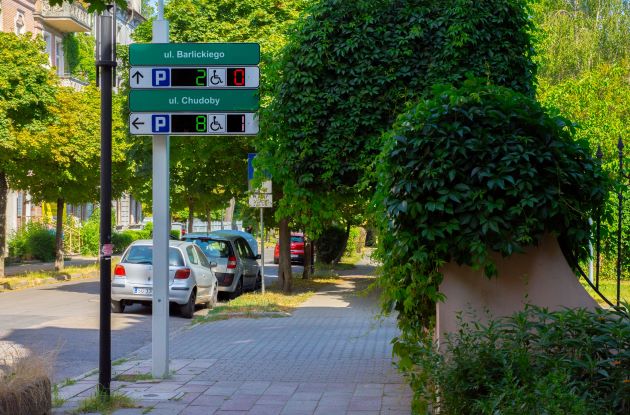
Actions for Sustainable Mobility
As a part of the Sustainable Urban Mobility Plan (SUMP), the following key strategic areas and actions can be identified:
Focusing on spatial planning that incorporates transport aspects and an approach to reducing transportation needs
- Providing a wider range of services at interchange points, i.e. points of contact of various forms and means of transport
- Construction of new housing estates and industrial districts in areas where public transport is well developed while excluding areas with limited transport accessibility from the possibility of development
Promoting the concept of non-motorized transport
- Coordination of the development of bicycle and pedestrian infrastructure, both ‘invisible’ (e.g. planning of bicycle routes in spatial development plans) and ‘visible’ (e.g. marking of bicycle paths, information boards, etc.), in order to create comprehensive and friendly transport routes
- Construction of bicycle infrastructure points, including, for example, bicycle shelters, to provide safe and convenient space for storing bicycles for people who use this form of transport
Improving the quality and accessibility of public transport
- Reorganization of transportation links and the ticket pricing strategy to adapt them to the needs of residents
- Combining different means of transport (e.g. bus, rail, tram, school) into one coherent transportation system
- Introducing information technologies and other improvements facilitating the use of public transport
- Development of a public transport system covering the entire metropolitan area, including rural areas
Improving safety and reducing traffic congestion
- Redirecting traffic outside the city centers and narrowing the streets where the traffic has been diverted from to create space for other road users and green zones
- Dividing the road network into zones, with different speed limits for main roads, access roads, and residential areas
- Improving the aesthetics of roads by adding greenery to the road lanes and installing small architectural elements
Parking policy
- Removal of illegal parking spots and organization of parking space in an orderly manner
- Introducing a rotation system of parking spaces to increase their availability
- Constructing and providing buffer car parks or park&ride systems as a solution to reduce traffic congestion in the city center
Reducing the negative impact of transport on the environment
- Modernization of roads by introducing measures such as: narrowing the roads, adding greenery to the roadside areas, using ‘quiet road surface’, reducing vehicle traffic in places where the highest noise and emission levels are generated
- Using alternative sources of fuel for individual and public transport to reduce environmental impact
Educational action:
- Promoting the use of greener means of transport through modern marketing tools
- Increasing public awareness of the environmental impact of different forms of transport and the positive aspects of investing in the development of public transport
It is important to promote the development of Sustainable Urban Mobility. It takes into account the needs of urban residents and at the same time takes care of the environment. Sustainable Urban Mobility helps protect the environment by reducing greenhouse gas emissions and improving air quality. The introduction of SUMP is a continuous process and requires the involvement of all stakeholders, but the effects of these actions are noticeable and contribute to improving the quality of life in cities.
DYSTEN has experience in developing and delivering solutions that help improve the functioning of urban traffic, the quality of public transport and road safety. If you support the vision of Sustainable Urban Mobility, we encourage you to contact us. Together, we can make positive changes that will benefit people and the environment.





